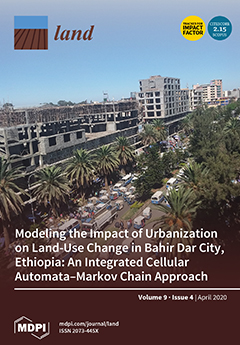Resources
Displaying 1481 - 1485 of 2258Land Cover and Land Use Change in the US Prairie Pothole Region Using the USDA Cropland Data Layer
The Prairie Pothole Region (PPR) is a biotically important region of grassland, wetland, and cropland that traverses the Canada-US border. Significant amounts of grasslands and wetlands within the PPR have been converted to croplands in recent years due to increasing demand for biofuels. We characterized land dynamics across the US portion of the PPR (US–PPR) using the USDA Crop Data Layer (CDL) for 2006–2018. We also conducted a comparative analysis between two epochs (1998–2007 & 2008–2017) of the CDL data time series in the North Dakotan portion of the US–PPR.
Spatial Orientation Skill for Landscape Architecture Education and Professional Practice
Professional landscape architecture organizations have requested training from educational institutions based on new skills and methodologies in the curriculum development of students. Landscape architects need to visualize and evaluate the spatial relationships between the different components of the landscape using two-dimensional (2D) or three-dimensional (3D) maps and geospatial information, for which spatial orientation skills are necessary.
Desertification–Scientific Versus Political Realities
Desertification is defined as land degradation occurring in the global drylands. It is one of the global problems targeted under the Sustainable Development Goals (SDG 15). The aim of this article is to review the history of desertification and to evaluate the scientific evidence for desertification spread and severity. First quantitative estimates of the global extent and severity of desertification were dramatic and resulted in the establishment of the UN Convention to Combat Desertification (UNCCD) in 1994. UNCCD’s task is to mitigate the negative impacts of desertification in drylands.
A Bottom-Up and Top-Down Participatory Approach to Planning and Designing Local Urban Development: Evidence from an Urban University Center
The urban area is characterized by different urban ecosystems that interact with different institutional levels, including different stakeholders and decision-makers, such as public administrations and governments. This can create many institutional conflicts in planning and designing the urban space. It would arguably be ideal for an urban area to be planned like a socio-ecological system where the urban ecosystem and institutional levels interact with each other in a multi-scale analysis.
Cultural Ecosystem Services of Geodiversity: A Case Study from Stránská skála (Brno, Czech Republic)
The concept of ecosystem services developed in the second half of the 20th century, and the Millennium Ecosystem Assessment was crucial for its acceptance. This assessment identified the services that ecosystems provide to society, but geodiversity (as an indispensable component of ecosystems) was somewhat underestimated. At present, geodiversity is intensively used by human society and it provides numerous services including cultural as a resource for tourism, recreation, as a part of natural heritage, and to satisfy matters of spiritual importance.



